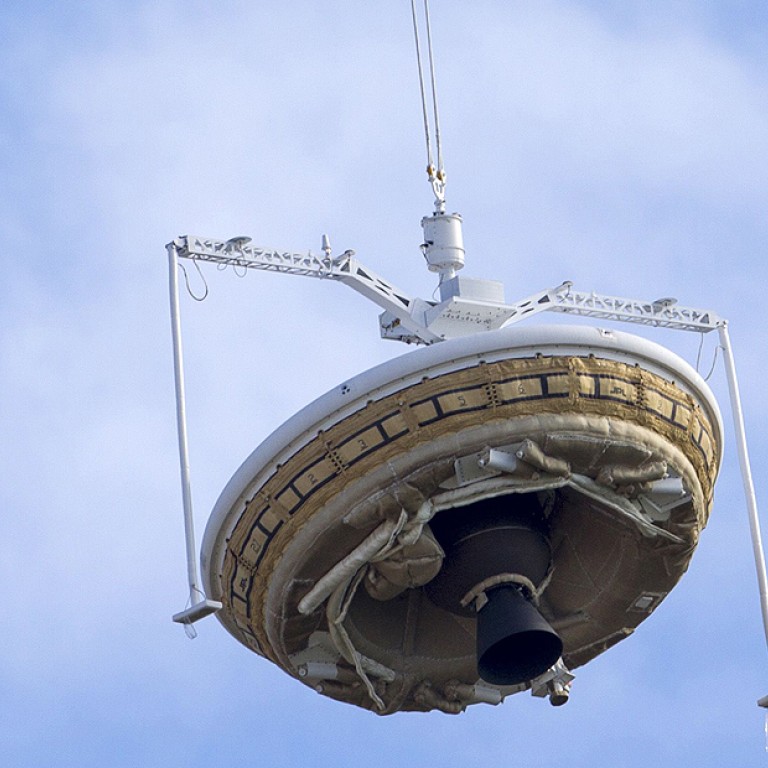
Nasa launches ‘flying saucer’ to test new technology for landing on Mars
Possible future Mars lander lifted nearly into space by balloon and its own rocket engine
A saucer-shaped Nasa vehicle testing new technology for Mars landings has made a successful rocket ride over the Pacific, but its massive descent parachute only partially unfurled.
The Low Density Supersonic Decelerator was lifted by balloon 36,575 metres into the air from the Hawaiian island of Kauai. The vehicle then rocketed even higher before deploying a novel inflatable braking system.
But cheers rapidly died as a gigantic chute designed to slow its fall to splashdown in the ocean emerged tangled.
Still, officials at the US space agency said it was a pretty good test of technology that might one day be used to deliver heavy spacecraft - and eventually astronauts - to Mars.
Since the twin Viking spacecraft landed on the "Red Planet" in 1976, Nasa has relied on the same parachute design to slow landers and rovers after piercing the thin Martian atmosphere.
The US$150 million experimental flight tested a novel vehicle and a giant parachute designed to deliver heavier spacecraft and eventually astronauts.

Viewers around the world with an internet connection followed portions of the mission in real time thanks to cameras on board the vehicle that beamed back low-resolution footage.
After taking off from the Pacific Missile Range Facility on Kauai, the balloon boosted the disc-shaped vehicle over the Pacific. Its rocket motor then ignited, carrying the vehicle to a height of 55 kilometres at supersonic speeds.
The environment that high up is similar to the thin Martian atmosphere. As the vehicle prepared to drop back to earth, a tube around it expanded like a Hawaiian puffer fish, creating atmospheric drag to dramatically slow it down from Mach 4, or four times the speed of sound.
Then the parachute unfurled and guided the vehicle to an ocean splashdown about three hours later. At 33 metres in diameter, the parachute is twice as big as the one that carried the one-tonne Curiosity rover through the Martian atmosphere in 2011.
Engineers planned to analyse the data and conduct several more flights next year before deciding whether to fly the vehicle and parachute on a future Mars mission.
"We want to test them here where it's cheaper before we send it to Mars, to make sure that it's going to work there," project manager Mark Adler of the Nasa Jet Propulsion Laboratory said earlier this month.
The technology envelope needed to be pushed or else humanity would not be able to fly beyond the International Space Station in low-earth orbit, said Michael Gazarik, Nasa's head of space technology.
